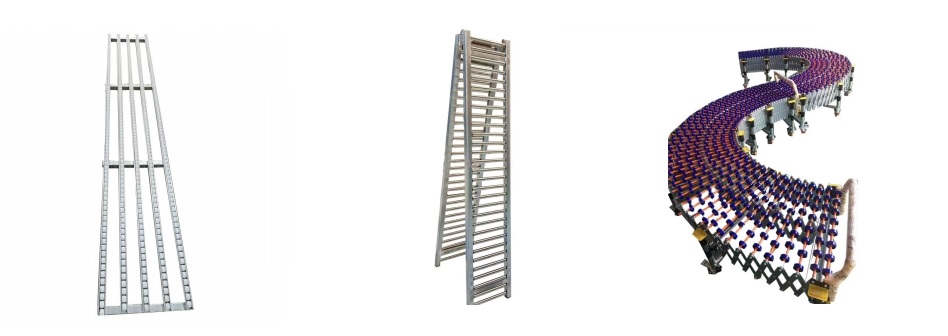Material Packaging Conveyor Roller Line Equipment
Material Packaging Conveyor Roller Line Features
High unloading capacity and fast conveying: Material Packaging Conveyor Roller Line Equipment have excellent unloading capacity and fast conveying speed, making them ideal for long-distance transportation, saving time and labor costs.
Flexibility and ease of use: Material Packaging Conveyor Roller Line Equipment are designed to be convenient, supporting infinite splicing and telescopic functions, while also enabling 360-degree turns and height adjustments. This makes roller conveyors highly flexible and adaptable to different needs.
Convenient mobility and flexibility: Material Packaging Conveyor Roller Line Equipment are equipped with swivel brake casters at the bottom, making them easy to move and position, allowing for flexible use in different locations.
Wear-resistant, corrosion-resistant, and long lifespan: Roller conveyors are made of wear-resistant and corrosion-resistant materials, providing excellent durability and resistance to corrosive elements. They have a long service life and can withstand prolonged use and harsh environments.
Gravity unloading without power supply: Material Packaging Conveyor Roller Line Equipment do not require a power source; they use gravity to unload goods. The goods travel along the wheel tracks of the roller conveyor, facilitating an efficient unloading process.
In summary, Material Packaging Conveyor Roller Line Equipment offer advantages such as high unloading capacity, fast conveying, flexibility in use, convenient mobility, wear resistance, corrosion resistance, and long lifespan. They are outstanding material handling tools widely used in logistics and production processes across various industries. If you have any questions or requirements regarding roller conveyors, please feel free to contact us.

Material Packaging Conveyor Roller Line Configuration
Mining and Quarrying Industry: Material Packaging Conveyor Roller Line are widely used in the mining and quarrying industry for the transportation and conveying of materials such as ore, coal, limestone, and quartz sand.
Construction and Building Materials Industry: In the construction and building materials industry, roller conveyors can be used to transport materials such as sand, stone, cement, and concrete, in processes such as concrete mixing plants and stone production lines.
Metallurgy and Steel Industry: Material Packaging Conveyor Roller Line are used in the metallurgy and steel industry for the transportation of materials such as ore, iron ore, coke, and iron powder, as well as in the material conveying processes of ironmaking, steelmaking, and production of ferroalloys.
Grain and Food Industry: Material Packaging Conveyor Roller Line are used in grain processing, food production lines, and other fields for the transportation of materials such as grains, rice, flour, sugar, and vegetables.
Chemical and Pharmaceutical Industry: In the chemical and pharmaceutical industry, roller conveyors are used for the transportation of chemical raw materials, granular medications, chemical products, and other materials.
In addition to the above industries, Material Packaging Conveyor Roller Line are also suitable for various fields such as logistics, warehousing, textiles, electronics, printing, and automotive manufacturing. Whether in heavy industries or light industries, roller conveyors play an important role in improving production efficiency and reducing costs.
Material Packaging Conveyor Roller Line Description
Framework: The framework of a roller conveyor typically consists of steel components that provide sufficient strength and rigidity to support and maintain the stability of the entire conveying system.
Rollers: Rollers are the core components of a roller conveyor, used to support and roll materials. Rollers typically consist of a steel tube shell and bearings mounted on it. Rollers can be selected based on the requirements of material conveying and specific needs of the application, such as smooth rollers, grooved rollers, or patterned rollers.
Drive System: The drive system provides power to rotate the rollers, thereby driving the material transportation. The drive system typically includes components such as electric motors, reducers, and couplings.
Supporting Devices: Supporting devices are used to support and secure the framework of the roller conveyor, keeping it level and stable. Supporting devices typically include support legs and brackets.
Guiding Devices: Guiding devices are used to guide materials to maintain the correct direction during transportation, avoiding deviation or accumulation. Guiding devices typically include side plates and guide rollers.
Braking Devices: Braking devices are used to control the stopping and running of the roller conveyor. Common braking devices include brake wheels and brakes.